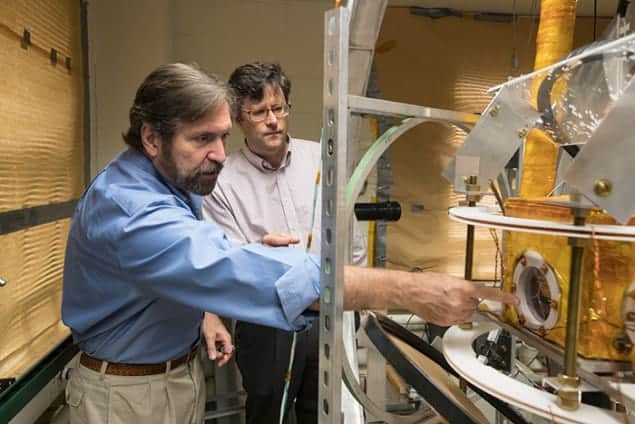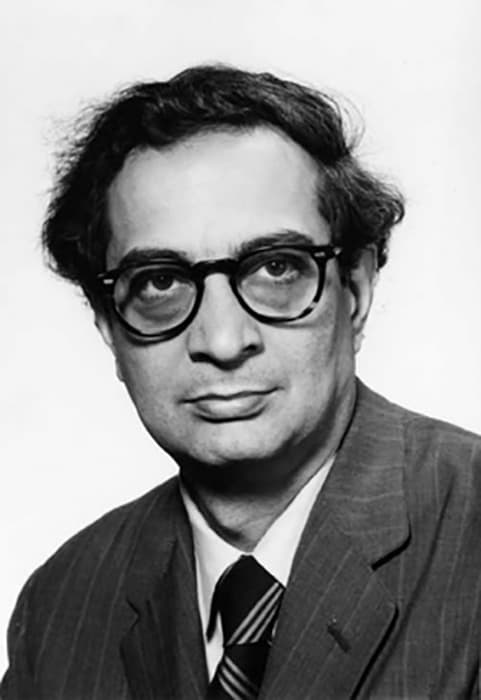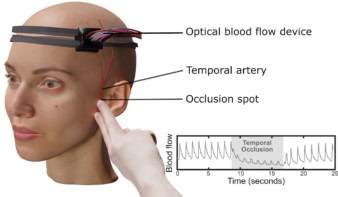Flash Physics is our daily pick of the latest need-to-know developments from the global physics community selected by Physics World‘s team of editors and reporters

New imaging technique combines MRI with nuclear medicine
A new technique that combines magnetic resonance imaging (MRI) and nuclear medicine has been developed by physicists in the US. The method uses the fact that the direction that a gamma ray is emitted from a radioactive nucleus is highly dependent on the direction of the nucleus’s magnetic moment. Much like conventional MRI, the technique involves placing the sample in a strong magnetic field that causes the magnetic moments of the nuclei to point in the direction of the field. Then a magnetic pulse causes the moments to wobble, much like a spinning top. In conventional MRI, this wobble is detected by the radio waves emitted by the sample and this provides important information about the local chemical composition within the sample. In this new technique developed by Gordon Cates, Wilson Miller and colleagues at the University of Virginia, the wobble is characterized by measuring the distribution of gamma rays emitted by radioactive nuclei – in this case xenon-131m. The team was able to image a glass container filled with a tiny amount of radioactive xenon gas. However, this took 60 hours to complete – which is far too long for practical imaging applications. If the technique can be improved, then patients could one day ingest a radioactive tracer that would then travel to a tumour or other tissue of interest. Doctors would then be able to use the technique to image the tissue and obtain new types of information about its composition. The research is reported in the Nature.
Polymers mimic evolution of life
An experiment that joins strands of DNA together to create long polymer molecules could shed light on the evolution of life – according to Philipp Zimmer and colleagues at the University of Saarland in Germany. Their experiment begins with a mixture of single-stranded DNA molecules that are divided into a number of samples. The samples are then heated through a number of different temperature steps, which are chosen to correspond to the known melting temperatures of different types of DNA strand. The samples are then cooled and the heating process is repeated over a number of cycles. During these cycles, the string-like molecules break apart and then join back together in a process called ligation. The team focussed on how this process causes the DNA to form polymer strands of different lengths. The researchers found that under certain conditions the system “self-selected” to create strands of a certain length. Furthermore, the process could continue indefinitely, with the polymers constantly self-selecting in response to changes in the heating cycle. The researchers believe that this process of “molecular evolution” could provide an important analogue to the evolution of living organisms – a process that also operates continuously and involves self-selection. In such an analogy, the distribution of polymers of different lengths represents the presence of different types of living organisms in an evolutionary system. The research is reported in the New Journal of Physics.
Inventor of gas laser Ali Javan dies at 89

The physicist and inventor of the gas laser, Ali Javan, has died at the age of 89. The emeritus professor at the Massachusetts Institute of Technology was a pioneer in quantum electronics as well as laser technology. He developed the gas laser in the 1960s while working at Bell Laboratories and the technology has since been used in a wide range of applications, from telecommunications to holography to medical devices. Javan also founded the first large-scale research centre in laser technology in the US. He was the first person to devise a way to accurately measure the speed of light and he also launched the field of high-resolution laser spectroscopy. Born in 1926 in Tehran, Iran, Javan moved to the US in 1949, where he studied and worked at Columbia University with Nobel-prize-winning physicist Charles Townes. Not having received either a bachelor’s degree or a master’s degree, Javan earned his PhD in physics at Columbia in 1954, with Townes serving as his thesis advisor.
- You can find all our daily Flash Physics posts in the website’s news section, as well as on Twitter and Facebook using #FlashPhysics. Tune in to physicsworld.com later today to read today’s extensive news story on a new quantum sensor for magnetic and gravitational fields.



